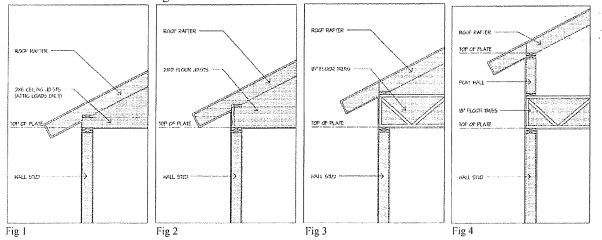BoA to interpret rule on attic dormers next month
Thursday, April 16, 2015 by
Elizabeth Pagano For almost a year, the Zilker Neighborhood Association has been waiting for an explanation about McMansion dormers. This week, association members took their questions to the Board of Adjustment and asked for an interpretation.
After a discussion of the issue, board members voted unanimously to postpone the item until their May 8 meeting to ensure that their interpretation will be clear.
The Zilker Neighborhood Association filed a challenge to a staff memo written by John McDonald of the Development Services Department. That letter of clarification explained why the city allows dormers to be present in an exempted, habitable attic.
“This has been staff’s policy, to allow dormers in exemptible attics, for the past nine years,” said McDonald. “Overturning this interpretation would basically overturn that many years of staff practice and policy.”
The association disagrees with that interpretation.
David Piper spoke on behalf of Zilker. He explained that they were not appealing the McMansion design criteria, only how the criteria apply to floor-to-area ratio, or FAR, calculations. He said that dormers add mass to the attic, which is contrary to code language that stipulates attics are exempt from FAR calculations because they add no additional mass.
“If you want to add mass to an attic, you shouldn’t get the FAR exemption. You should build your house a little smaller,” said Piper. “There is a prevalent misunderstanding and practice that if dormers meet the design standards of McMansion, then they automatically qualify for the FAR exemption. In fact, there is no correlation.
“If staff wishes to move this section of the code, they need to do so through a code amendment, not by arbitrarily ignoring the plain meaning of the language,” Piper concluded.
Board Member Michael Von Ohlen said that part of the problem might be the evolution of dormers, which have changed since he worked as a framer.
“It’s clear to me that this type of dormer does add more habitable space,” said Von Ohlen.
For Chair Jeff Jack, the crux of the issue was whether the two different pieces of code apply to each other, since they are in different sections. He pointed out that by allowing dormers to be exempt as well, the house does get bigger, going against the idea that attics will not create additional mass.
“The problem is that I do believe the code is somewhat ambivalent,” said Jack.
No one argued over whether the current code was ambiguous. In fact, real estate developer Jonathan Lee spoke to the board to ask for clarification. He said that he has experienced delays in his projects because of the current lack of clarity.
Though they refrained from writing their interpretation on the dais, some board members weighed in Monday.
“I’m inclined to support staff’s opinion at this time,” said Board Member Will Schnier. “I see no reason here to overturn it. I feel like, as ugly as it is, these architects are well within the code as written.
“If they want to change the code, they can write a new ordinance. But it’s not up to us to rewrite it,” he continued. “That’s my current opinion.”
If the city changed the code interpretation, it would have no impact on already-constructed buildings.
Diagram courtesy of the City of Austin.
You're a community leader
And we’re honored you look to us for serious, in-depth news. You know a strong community needs local and dedicated watchdog reporting. We’re here for you and that won’t change. Now will you take the powerful next step and support our nonprofit news organization?




